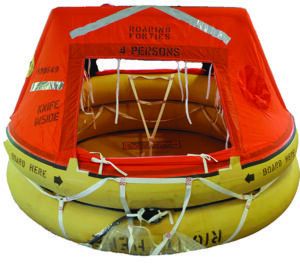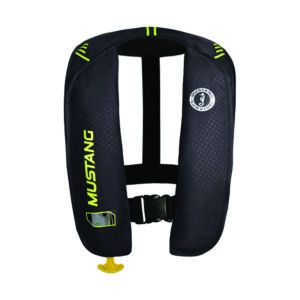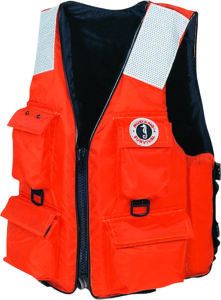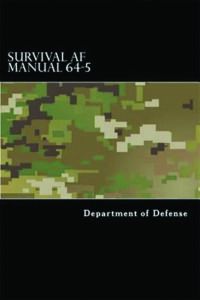My previous article (“Off-Field Landings,” October 2021) discussed how to minimize the risks when a worst-case scenario becomes real. Doing what you can to prevent an off-field landing remains Job One, but sometimes things don’t work out. All of a sudden, you’re on the ground, the airplane is broken and you can’t get a cell signal on your phone. There may be injuries, and you’re not even sure where you are.
A lot of pilots do not consider how long rescue might take, especially if the crash site is in a remote or difficult-to-access location. It’s one thing to lose the engine and land on a Southern California Interstate, but it’s quite another over water or wilderness. If you have to “land out,” how can you help emergency services determine your location and keep everyone safe, secure and sheltered while you wait?
BEFORE THE CRASH
I mentioned some of this in the last article, but it bears repeating. There are a few steps that can be taken prior to a known crash. First, utilize the services available to you. As you can see from the table in the sidebar on the opposite page, filing flight plans substantially reduces the time to rescue. Additionally, it is critical to remember that the only guaranteed equipment you can take with you after a crash will be whatever is on your person. A well-intentioned survival kit is useless if it stays on the plane while all the occupants are being evacuated.
You may have heard the phrase “dress for egress” before, and I think it is a good one to keep in mind. A common example of this is dressing appropriately for winter, even if it is not a particularly cold day. Without shelter, even relatively mild temperatures create hypothermia risks. In my head, I have also added my survival equipment into the mix when considering how to dress for egress.
Having a utility tool or basic knife secured to your person ensures it will make it off the aircraft when you do. Additionally, ensure any survival equipment you do have onboard is accessible and ready for a quick exit. Having it buried in the luggage would be such a shame. Imagine being so prepared, having the foresight to purchase something like that and rendering it useless by poor choice of placement.

The principal reason pilots file a VFR flight plan is for search and rescue purposes. Not so, of course, for IFR flight plans, although failure to close an IFR will elicit a similar response, only quicker. The table below, adapted from FAA Civil Aerospace Medical Institute (CAMI) guidance—“Basic Survival Skills for Aviation”—shows filing any flight plan provides a clear advantage when it comes to how long before you’ll be rescued. It’s important to note the times required for notification and rescue listed below are averages, however; your delay may be much longer.
According to CAMI, the information in the table is from the U.S. Air Force Rescue Coordination Center (AFRCC) and dates from 2008. The CAMI document allows that these average times “will be affected by the change from 121.5 MHz to 406 MHz [ELTs], but are not indicated in these numbers.”
It’s reasonable to presume technological advances since 2008—smart phones and better cellular coverage, plus ADS-B, for example—may have shortened these times. On the other hand, an undated primer on search and rescue, also by CAMI and on the FAA’s web site, says the average time between identifying the last known position and rescue is 13.1 hours for an IFR flight plan, 37.3 hours if you filed VFR and, if you didn’t file at all, is 42.4 hours. Neither of these sources discuss the advantages, if any, of obtaining VFR flight following from ATC — J.B.
NOTIFYING OTHERS
Step one on your rescue plan is to give emergency services the best shot at finding you as quickly as possible. One of the challenges of discussing these matters is there is no perfect roadmap to something of this nature. An off-airport landing in a desert climate will have drastically different survival requirements than landing on a frozen lake. Whatever happens, making yourself as visible as possible will help search and rescue personnel pinpoint your location.
Handheld Radio: I am a big fan of handheld radios. You can get your ATIS and clearance in the comfort of the FBO, and it can really simplify a lost comms situation. While researching this article, I stumbled across several examples where pilots were watching search and rescue fly right over their position but had no luck finding them. A handheld will probably not reach any local ATC facilities, but it will certainly reach aircraft flying overhead.
Locator Beacons: Fortunately for us (and our wallets), most aircraft already come with one of these! If you own your airplane, or have a say in how it is updated, it is worth considering what type of ELT you have. Thousands of aircraft are still equipped with 121.5 MHz ELTs, which are not nearly as effective as the more modern 406 MHz version. They have a high false alarm rate, activate properly in only a small percentage of crashes and provide no identification data.
Modern 406 MHz ELTs reduce false alarms, increase survivability success rates and help minimize rescue time. They typically also have panel-mounted controls, allowing you to trigger the ELT while airborne. If you are ambitious, personal locator beacons (PLBs) are available for the cost of 2-4 hours of normal flying. A PLB can accurately depict your location down to about the size of a football field and save numerous lives each year.
Signaling Devices: A signaling device can range from something as simple to a mirror to a pyrotechnic device. Obviously, a set of flares would be the most effective, but also come with the most consideration. Any pyrotechnic device should be kept out of reach of children, so you are sort of stuck between “secure enough from unwanted hands” and “easily accessible in a pinch.” A lot of this may seem obvious, but I know that I had not considered the location or if even this equipment was on board while renting in my early flying days.
A pyrotechnic signaling device is not legally required unless you are flying a large and/or turbine-powered multiengine airplane over 50 nm from shore, but they can be extremely beneficial. Remember to save your flares until you see or hear an approaching aircraft or boat. It may be tempting to immediately light one off, but it only helps if it has a chance of being seen.

It may seem like I am advertising for survival kits, but the reality is if one is not legally required for your operation, you can pick and choose what is important to you and make a kit that fits your needs. This becomes a lot more challenging with a life raft. I spend a lot of time flying around water, and this creates scenarios (like an engine failure right after takeoff) where it makes sense to plan to ditch. In the summer, a personal flotation device would probably do the trick. In the winter, even a short time in cold water can be fatal.

Whether a life raft makes sense for your mission is completely up to you. The aircraft I fly has a fantastic ditching record, with no fatalities after several ditchings. Often, I will be flying a landlocked mission and the person I am flying with will ask if I want to leave the raft behind. I always answer, “Heck, no!” The beauty of the life raft is it can serve many purposes. It has survival rations, signaling devices, quick reference guides. Even the raft itself can serve as quality shelter. Plus, the rafts are smaller and lighter than ever. A standard four-person raft with additional emergency equipment can be as light as 22 pounds and compact enough to fit in almost any aircraft.
Just remember that having it aboard is one thing; egressing with it may be quite another. Have a plan to get the raft out the door and tethered to someone before the airplane sinks beneath you, taking that expensive piece of survival equipment with it.
Regardless, a personal flotation device, or PFD, should be considered mandatory if you spend any time flying over water. Keep in mind that stowing it in the aft cabin, perhaps along with the raft, might not do much good, however: dress for egress. The good news is modern PFDs are wearable in the cockpit without too much inconvenience.
KEEPING EVERYONE SAFE
Once you have completed your off-airport landing, and all occupants are safely evacuated, it’s time to evaluate the situation. The first and most critical step is to treat any injuries.
First Aid Kit: I am definitely a safety nerd, even outside of aviation. When I buy a car, the first thing I do is put in a first aid kit and a set of jumper cables. I have never been in a serious accident, but I cannot tell you how many times I have utilized that first aid kit. I have seen several excellent kits for sale, some that even have helpful guides on basic first aid.
Utility Tools: Earlier I mentioned a multi-tool or knife, which any survivalist will tell you can be extremely helpful in a variety of different situations. They can also serve a purpose exiting the aircraft. They can cut stuck seatbelts or break a window or stuck canopy. Whatever you choose, it should be sturdy and comfortable.
General Survival Equipment: This is where the folks who put together survival kits really think of everything. Any Boy Scout is way ahead of me in this section. Arguably the most critical (so long as your off-airport adventure is a land adventure and not a sea one) is tools to start a fire. I debated putting fire starter in the previous section, because a good fire can be a great way to show SAR assets your current location. Additionally, fire can provide heat to prevent hypothermia and for cooking. Care must be taken to avoid wildfires, which works all the better because a small clearing will be more visible from overhead.
Most of the remaining equipment works under the assumption that it could be hours or even days before being rescued. In many less forgiving climates, shelter will be a requirement to survive overnight. Personally, I am not a survivalist. Many kits plan for this and provide a guide to cover basics for several different situations. Creativity goes a long way. Utilizing all available resources also is key, even including salvaging resources from the aircraft once the fire risk is minimized.
There are other environmental considerations. Sunscreen and bugspray may not be the difference between life and death, but sure could change how much medical help will be needed after rescue. Water is more critical than food. In fact, food should be avoided unless there is a clean source of water. Your body may be protesting, because it prefers three meals a day, but it will be fine without food for the duration of the vast majority of rescue missions.

If you ever spend any time with float-plane pilots, especially in Alaska, you may come to admire the survival vests they all seem to wear. It’s sort of a PFD on steroids, providing personal flotation and pockets for storing various pieces of gear that can come in handy in survival situations. — J.B.
MIND OVER MATTER
Below are two post-crash scenarios published in USAF Manual 64-5, Aircrew Survival.
Scenario 1: Stranded without food or water on a vast stretch of the Arizona desert for eight days, a man traveled 150 miles during the day in temperatures as high as 120 degrees. Lack of water caused him to lose 25 percent of his body weight through dehydration (10 percent is usually considered fatal). He had crawled the last eight miles completely naked. The lacerations he had suffered did not bleed until he had replaced the water in his system. He had done nothing right because he had no survival training. Yet, one thing this man did have was a strong will to survive, and he did survive through sheer will power.
Scenario 2: A pilot ran into engine trouble and chose to dead-stick his plane, rather than eject. The aircraft came to rest on a frozen lake with little or no damage. After examining the aircraft for damage and assessing the area, he noticed a wooded shoreline that would provide decent shelter. Approximately halfway to the shoreline he decided to return to the aircraft. After re-entering the cockpit, he lit a cigar, and smoked a portion of it. He then pulled out a pistol, and delivered a fatal shot to his head. Amazingly, less than 24 hours later, a rescue team located him.
Ultimately, an emergency involving an off-airport landing, followed by a multiday survival scenario, is exceedingly unlikely. But aviation is one of those fickle things where we prepare, plan and train for the remote. I am required go to training every six months, and every takeoff I am prepared for the inevitable engine failure or inadvertent thrust reverser deployment. Taking that mindset of “when, not if” can keep all aspects of your flying sharp.
It is important to keep that same mindset with things like off-airport landing survival. The first step is admitting that it’s a possibility, however remote. The second is mental preparation. Even the most stocked survival kit is useless if the user does not keep their wits about them and continually maintains a positive outlook. As shown in the scenarios above, a strong will to survive can be the difference between success and failure.

Survival situations are all about prioritization. The “Rule of Threes” was established based on a rough estimate on how long a human can survive without each of these items:
Air (3 minutes)
Shelter (3 hours)
Rest (30 hours)
Water (3 days)
After the evacuation, initial shock period and first aid application, it is time to STOP: Sit, Think, Observe and Plan. Since one can rarely schedule a survival event, the surprise combined with the enormity of the situation can be overwhelming. Some survivalists add an additional three seconds at the beginning of the list to prevent panic and maintain composure.
Ryan Motte is a Massachusetts-based Part 135 pilot, flight instructor and check airman. He moonlights as Director of Safety when he isn’t flying.




